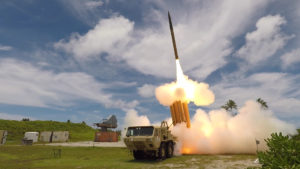
The chairman of the House Armed Services Committee’s mark, or first draft, of the fiscal year 2024 defense authorization bill would add $100 million to fund six more Terminal High Altitude Area Defense (THAAD) interceptors due to concerns about fielding and China. A senior committee aide told Defense Daily that in the wake of U.S. Strategic Command approving the current Army requirements for two more THAAD batteries in 2018, Batteries 8 and 9, Chairman Mike Rogers (R-Ala.) is concerned current…

 By
By 











